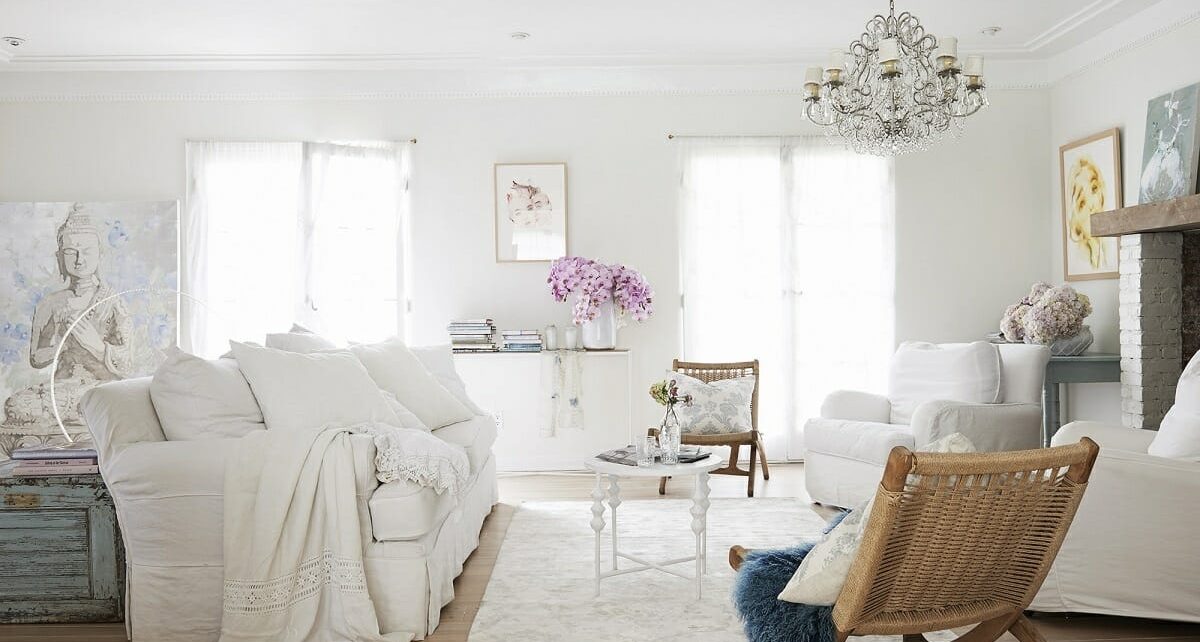The interior lighting of the house has a role that is both practical and aesthetic. It must be adapted to the needs of the room and the desired atmosphere. A real decorative element, it must fit perfectly with the style of your interior. Obtaining beautiful lighting takes several parameters into account: multiplying the light sources, choosing the appropriate colors and directing the light in the right direction to enhance the decor. A style exercise to handle, of which our experts reveal all the secrets! For successful interior home lighting, follow the guide!
What are the different types of indoor lighting?
Are you perhaps starting a major renovation project and thinking about the lighting? First of all, know that there are different types of lighting to bring artificial light into your interior when natural light is no longer sufficient. Each lighting meets a specific need according to your activity and your desires. For a successful result, distribute the lighting harmoniously in the rooms of your interior.
General interior lighting
As the name suggests, general lighting aims to illuminate an entire room. It often takes the form of a ceiling light or a suspension to be switched on as soon as you enter. This ceiling lighting generally provides sufficient light for orientation. It is found in living rooms such as the living room, dining room and kitchen.
- Ambient lighting: this accent lighting is used to create a soothing and cozy atmosphere in the room. Less intense and softer than the main lighting, its brightness can be modulated using dimmers. The ambient lighting is ideal for entertaining your friends for dinner or for a cocooning TV evening. Halogens, table lamps, wall lights, reading lamps… There are many possibilities for achieving this occasional light supply.
- Functional lighting: it is intended to facilitate household activities, such as cooking, reading, working, DIY, etc. Functional lighting allows these activities to be carried out comfortably and safely. Responding to a very targeted need, it is often presented as directional lighting (directed towards the activity to be carried out) and quite bright: lamp illuminating a work surface or a sink, bathroom spotlights, articulated lamp for reading, etc.
- Decorative lighting: with a function dedicated to decoration, decorative lighting is used to enhance your paintings, statues, objects, engravings, plants, etc. It is above all directional (directed towards the object to be highlighted) and can be present in the form of adjustable spotlights or small tilting luminaires. Like mood lighting, it helps create a soothing atmosphere by creating bright areas and shaded areas.
Which light to choose for each room in the house?
In order to make your interior lighting a success both on a practical and decorative level, adapt the light sources to the functions of the room and distribute them harmoniously. So which light to choose? Think ahead about the lighting atmosphere you want to create in each room of your home.
Lighting in the living room and dining room
Main living rooms, it is in the living room and in the dining room that you spend most of your time: family meals, reading time, cocooning evening… The activities are varied and the lighting must therefore be adjustable. Ideally, choose a ceiling light or a chandelier as the main lighting. Multiply the sources of light with accent or ambient lighting: a halogen lamp to vary the light intensity and several lamps to place on the furniture. As a final touch, plan a small garland that will complete this cozy atmosphere!
The lighting in the kitchen
Kitchen lighting has a very important function. When you prepare your meals or handle kitchen utensils, you need a sufficiently large amount of light. Prefer general lighting with a large suspension above a kitchen island, for example, or ceiling spotlights. Ideally, equip yourself with a dimmer. Complete the main lighting with directional lighting: place spotlights oriented towards the cooking space, the worktops and the sink.
Lighting in the bathroom
Your bathroom should be well lit, especially if it is not exposed to natural light. It is in this room that you engage in precision activities! Shaving, hair removal, make-up… Your mirror must be equipped with sufficiently powerful functional lighting ! Decorate it with light spots to direct according to your needs. Multiply the contributions of light with a ceiling light, or even mood lighting for your moments of relaxation in the bath.
The lighting in the bedrooms
The bedroom is the room for rest. The lighting must therefore be subdued, subdued and soothing. Choose light sources in several places in the bedroom: bedside lamps on each side of the bed for your reading moments and a suspension with soft light for your other activities. Sconces are also well suited for the bedroom. As in the living room, a garland will bring a cozy and cozy touch. Choose yellow bulbs, which are warmer than white bulbs.
Lighting in the office
The office is your work room. Therefore the light must be comfortable. It is neither too intense nor too weak so as not to tire your eyes. Prefer 2 types of lighting: a main one with a ceiling light and a functional one with a modular desk lamp.
Lighting in the entrance
In the entrance, the lighting must be sufficient to find your keys and store your shoes. Add decorative and subdued lighting to create a zen and welcoming atmosphere as soon as you enter the house.
How to integrate the interior lighting of the house into the decoration?
- Lighting to highlight your decor
The enhancement of the decor also goes through its lighting! For this, ambient and decorative lighting fulfill their role perfectly. Choose spotlights or wall lights to direct or tilt in the direction of your choice: towards an object, a piece of furniture, a plant or a bookcase. Go for models on homary.com! Ideally, enhance your decor with low intensity light to avoid heat effects.
- Choosing the right lights
The interior light has a lighting role (main, auxiliary, directional, etc.), but as a decorative object, its aesthetic aspect is very important! To know which luminaire to choose, think about the style of the room. It must fit in harmoniously: a designer floor lamp or recessed spotlights for a modern living room, a metal suspension for an industrial-style kitchen, a wooden chandelier for a rustic dining room! Depending on the shape, material and color chosen, the result will be very different!
- Multiply light sources
Thanks to the many light sources in your interior, play on the variations and change the atmosphere according to your mood! Ideally, provide 3 light sources per room and diversify the types of lighting: suspension, floor lamp, table lamp, spotlights, wall lights… If your electrical installation allows it, opt for dimmers. Successful interior lighting of the house depends on an oriented and well-balanced light supply.
- Direct the lights
Whether the lighting is direct (the light is projected directly onto the surface to be illuminated), indirect (the light is projected onto a reflective surface, such as a wall, ceiling or floor) or mixed (the light beam is divided in 2), it is essential to direct it in the right direction and with the right intensity. Create light effects with well-directed lighting. For example, direct the light towards the ceiling to highlight it and create volume.
Indoor lighting: choosing your bulbs
The bulbs must be adapted to the luminaire and the intensity of the lighting sought.
What criteria should be taken into account?
- color temperature: it is measured in kelvins (K). For example, at 2000 K, the color is warm and reddish. At 2700 K, it turns towards yellow. At 4000 K, it looks like a white color. Beyond 6000 K, it tends towards cold colors like blue. Choose warm colors for cozy atmospheres in the living room and cold colors for functional lighting in the bathroom.
- the color rendering index (CRI): this expresses the ability of a luminaire to render a color.
- luminous intensity: it is measured in lumens (lm). The higher the lumens, the more intense the light will be.
Preferably, choose new generation bulbs and LED bulbs that require less consumption.
For successful interior home lighting:
- vary the lights by correctly proportioning their power;
- choose the right colors of bulbs according to the desired atmosphere;
- direct the light to create stylish effects and enhance your furniture and decor!




